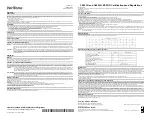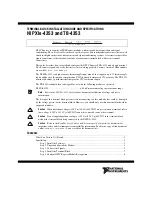
Graphic Operator Terminal /
INSTALLATION TIPS
Use an EMC cable gland or regular plastic cable gland. Remove the outer jacket and connect the
shield to the installation plate with a 360 ° metal cable clamp.
Place the 24 V DC and communications cabling in one cable trunk/cable duct and 230/380 V AC
in another. If the cables need to be crossed, cross them at 90 ° only. Avoid combining the cabling
for stronger 24 V DC outputs with the communication cabling.
Ferrite cores that are snapped onto the shielded cabling may remove minor disturbances. Large
ferrite pieces that are snapped onto unshielded cabling and where the wires go 2-4 times around
the cores are approximately 5-25 times more efficient.
6.4 Ambient
Temperature
The maximum ambient temperature for the graphic operator terminal is provided in the
specifications. The ambient temperature refers to the temperature in the device cabinet which
cools the terminal’s electronics.
In most cases, the ambient temperature for the graphic operator terminal is significantly higher
than the device cabinet’s ambient temperature.
If the cabinet is tall and there are a number of heat-generating devices, the temperature at the top
of the cabinet is considerably higher than the theoretical temperature increase that is expected.
All electronics are sensitive to heat. The lifespan of an electrolytic capacitor is cut in half with an
8-10 ° increase in temperature. A 15-20 ° temperature increase results in a quarter of the lifespan
etc.
Note:
An enamel-coated steel cabinet has a radiant heat value of 5.5 W/m
2
and degrees C.
Installing a fan inside the cabinet will even out the temperature, while moving air provides
considerably better cooling than still air. A suitable fan is a 120 x 120 mm axial fan, available in
24 V DC, 115, and 230 V AC.
21








































